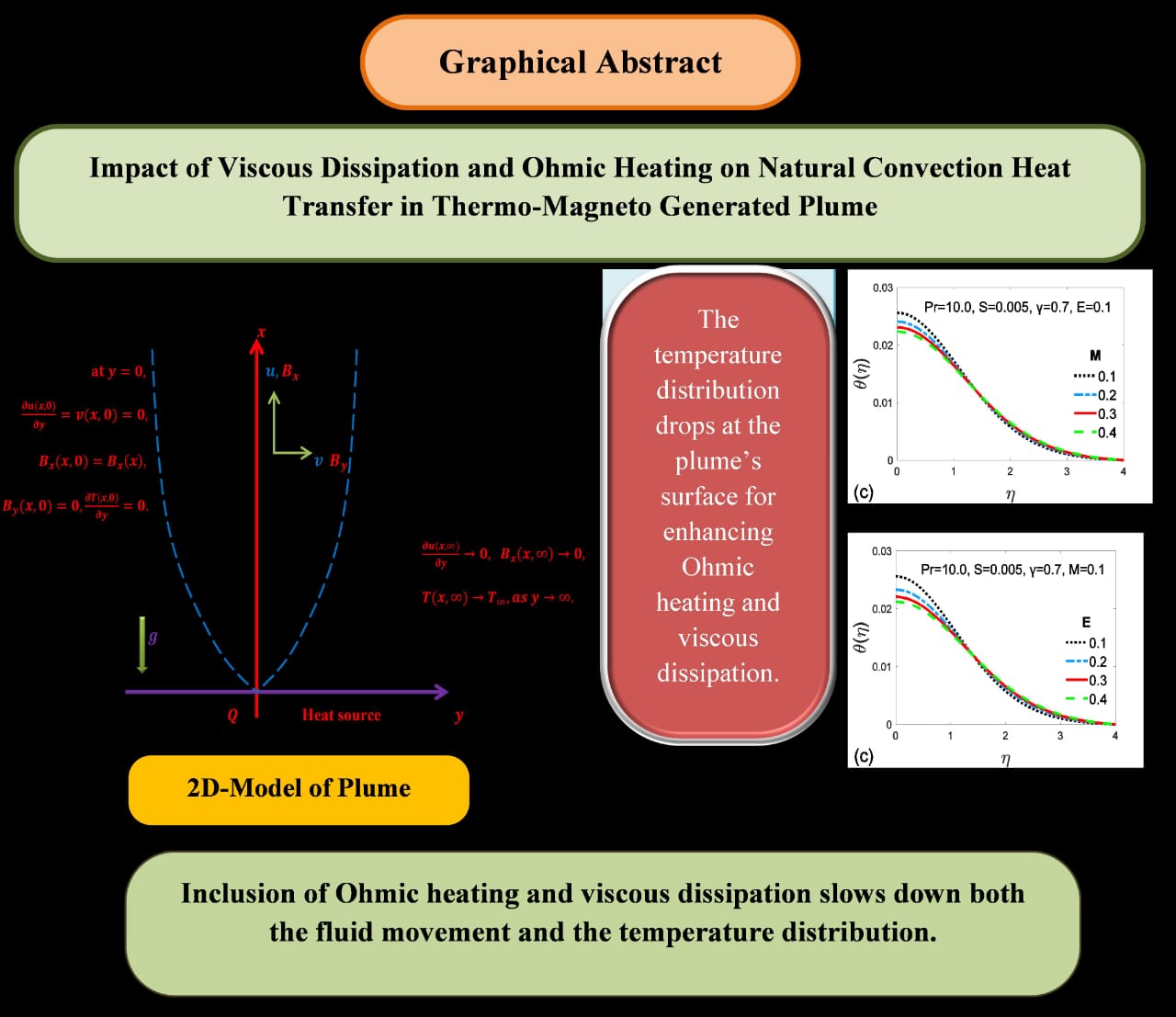 Open Access
Open Access
ARTICLE
Impact of Viscous Dissipation and Ohmic Heating on Natural Convection Heat Transfer in Thermo-Magneto Generated Plume
1 Department of Mathematics, Faculty of Science, University of Sargodha, Sargodha, 10400, Pakistan
2 College of Mechanical and Energy Engineering, Beijing University of Technology, Beijing, 100124, China
* Corresponding Authors: Ghulam Rasool. Email: ; Tao Sun. Email:
Frontiers in Heat and Mass Transfer 2024, 22(5), 1323-1341. https://doi.org/10.32604/fhmt.2024.055314
Received 23 June 2024; Accepted 09 August 2024; Issue published 30 October 2024
Abstract
The present investigation centers on the impact of viscous dissipation and ohmic heating on the plume generated by a line heat source under the impact of an aligned magnetic field. In this study, the flow model is adapted to incorporate ohmic heating and viscous dissipation by including the respective terms in the energy equation. A mathematical model is formulated as a system of coupled partial differential equations to analyze the flow problem. Subsequently, a numerical solution is derived with stream function formulation for the system of coupled partial differential equations, which transmutes it into ordinary differential equations. To achieve this, the numerical properties of the problem are established through the utilization of the Shooting method in tandem with the MATLAB tool bvp4c. The graphical representations of both missing and specified boundary conditions depict the effects of the magnetic parameter, viscous dissipation variable, magnetic force parameter, Prandtl number, and magnetic Prandtl number. These are accompanied by a discussion of their respective physical implications. The observed results claimed that the velocity, current density, and temperature distribution decrease for enhancing magnetic parameters. Meanwhile, the skin friction and magnetic flux drop while the heat transfer rate increases with an increment in magnetic parameters. These fluid flow and heat transfer characteristics were observed to decrease for increasing viscous dissipation. The current work is novel in incorporating ohmic heating viscous dissipation in energy equations coupled with Max-well and magnetic induction equations.Graphic Abstract

Keywords
Cite This Article
 Copyright © 2024 The Author(s). Published by Tech Science Press.
Copyright © 2024 The Author(s). Published by Tech Science Press.This work is licensed under a Creative Commons Attribution 4.0 International License , which permits unrestricted use, distribution, and reproduction in any medium, provided the original work is properly cited.


 Submit a Paper
Submit a Paper Propose a Special lssue
Propose a Special lssue View Full Text
View Full Text Download PDF
Download PDF Downloads
Downloads
 Citation Tools
Citation Tools